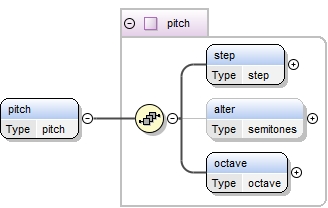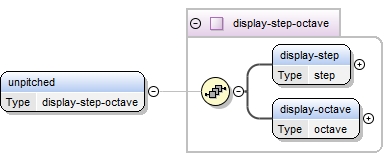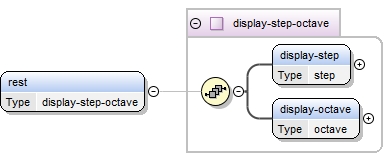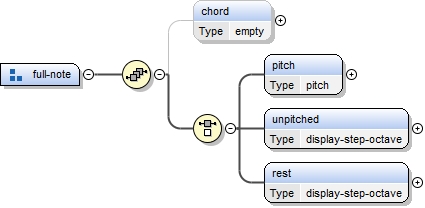<xs:group name="full-note">
<xs:annotation>
<xs:documentation>The full-note group is a sequence of the common note elements between cue/grace notes and regular (full) notes: pitch, chord, and rest information, but not duration (cue and grace notes do not have duration encoded). Unpitched elements are used for unpitched percussion, speaking voice, and other musical elements lacking determinate pitch.</xs:documentation>
</xs:annotation>
<xs:sequence>
<xs:element name="chord" type="empty" minOccurs="0">
<xs:annotation>
<xs:documentation>The chord element indicates that this note is an additional chord tone with the preceding note. The duration of this note can be no longer than the preceding note. In MuseData, a missing duration indicates the same length as the previous note, but the MusicXML format requires a duration for chord notes too.</xs:documentation>
</xs:annotation>
</xs:element>
<xs:choice>
<xs:element name="pitch" type="pitch"/>
<xs:element name="unpitched" type="display-step-octave">
<xs:annotation>
<xs:documentation>The unpitched element indicates musical elements that are notated on the staff but lack definite pitch, such as unpitched percussion and speaking voice.</xs:documentation>
</xs:annotation>
</xs:element>
<xs:element name="rest" type="display-step-octave">
<xs:annotation>
<xs:documentation>The rest element indicates notated rests or silences. Rest are usually empty, but placement on the staff can be specified using display-step and display-octave elements.</xs:documentation>
</xs:annotation>
</xs:element>
</xs:choice>
</xs:sequence>
</xs:group> |




